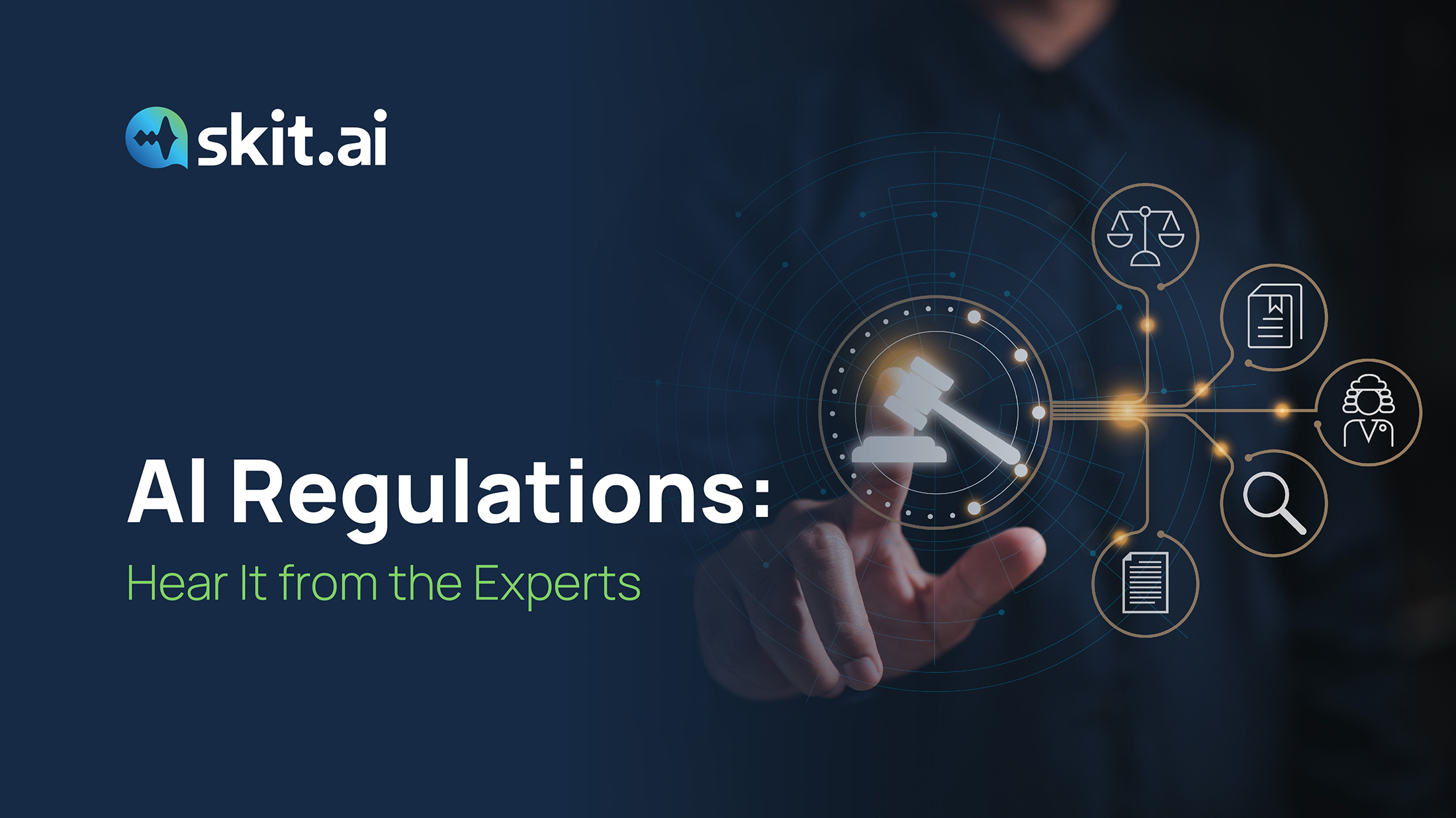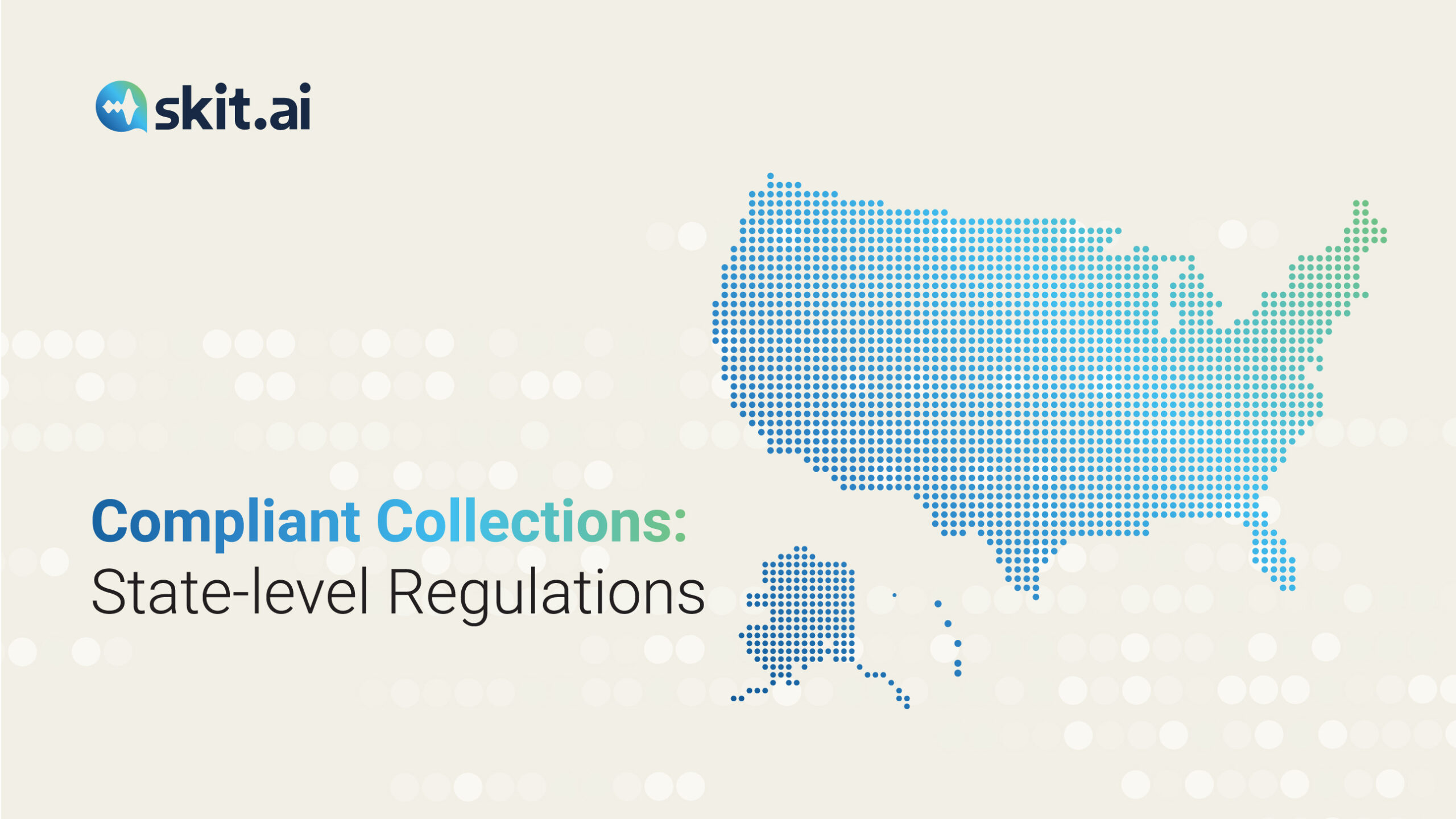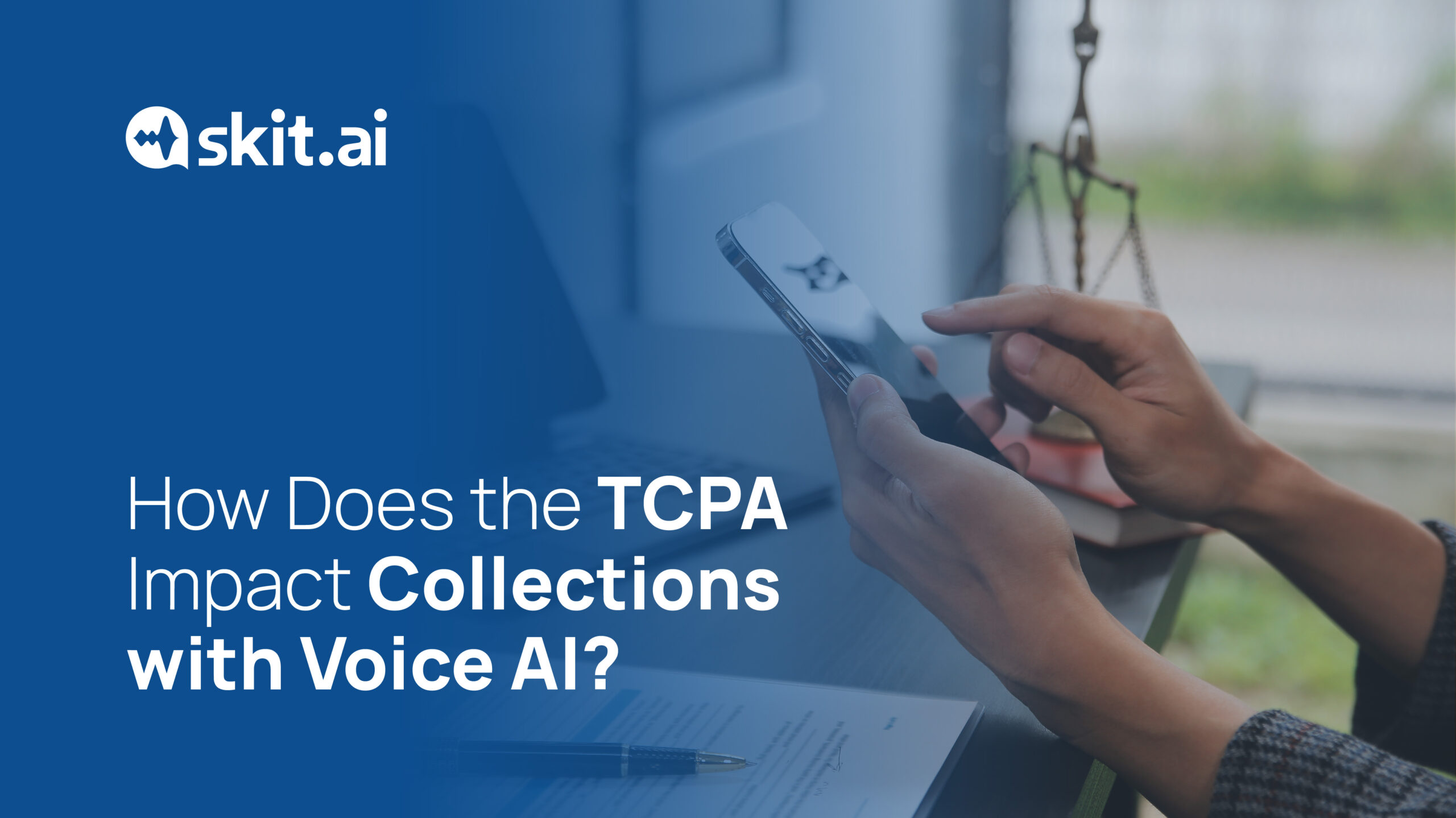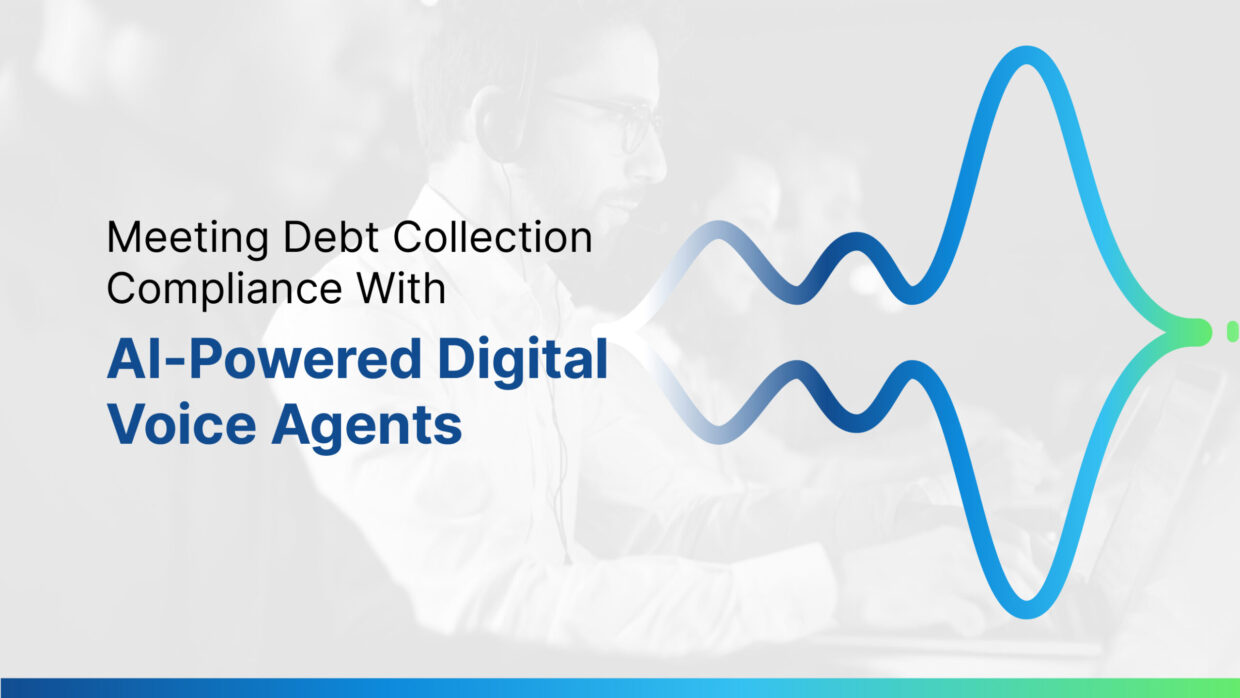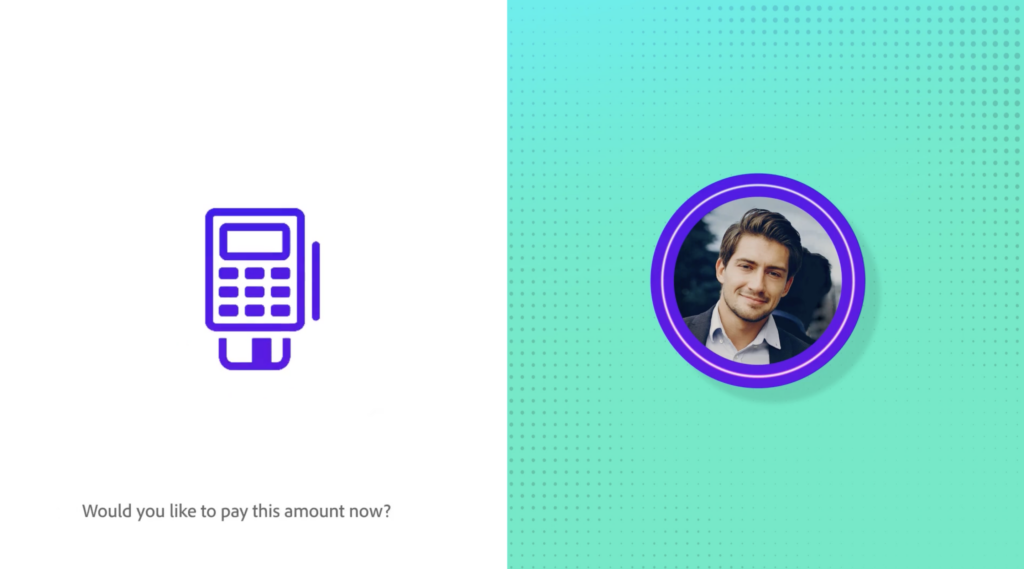From automation and decision-making to fraud detection and customer experience, the applications of artificial intelligence in financial services seem endless. As companies, both large and small, navigate this evolving landscape and its plethora of vendors and solutions, many ask themselves: How will this technology be regulated once our legislative branch starts looking into it more seriously?
At Skit.ai, we organized a panel discussion hosted by our friends at Accounts Recovery with three renowned experts, to whom we asked the most pressing questions on AI in financial services and the regulatory environment. What regulations should we expect? More specifically, which aspects of AI will regulators be more interested in scrutinizing?
In this article, we’ll discuss the current role of AI in the financial sector — with particular attention to the accounts and receivables industry — and report some of the insights from the industry experts we interviewed during the event.
Understanding AI’s Impact on Financial Services
AI in financial services is not a prediction or a catchphrase. According to an international survey published in 2020 by the World Economic Forum and the Cambridge Centre of Alternative Finance, 85% of financial services providers already use AI in some form. Additionally, 77% of the responding institutions reported believing that AI would become essential to their business in the following two years. With the launch of ChatGPT in 2022, these numbers can only be higher now.
Some of the most notable applications of AI in the sector, according to Deloitte, are:
- Conversational AI (such as chatbots and voicebots) for consumer interactions
- Fraud detection and prevention
- Customer relationship management
- Predictive analytics
- Credit risk management
The Regulatory Framework in the United States
Over the last few years, there have been efforts for legislators to study and regulate the use of AI in various industries, including the financial services industry. But while other foreign legislative bodies have been notably faster than the U.S. at passing timely legislation, there has yet to be a successful attempt at the federal level here in the United States.
In 2022, a bipartisan privacy bill, the American Data Privacy Protection Act (ADPPA) was introduced in Congress, but it did not make it through the Senate and has ever since been abandoned. Later in 2022, the White House published a policy document named the “Blueprint for an AI Bill of Rights,” seeking to provide guidance on the different rights that lawmakers should keep in mind when framing the discussion on the regulation of AI across industries.
In September, the U.S. Senate Committee on Banking, Housing, and Urban Affairs held a hearing about “Artificial Intelligence in Financial Services” to discuss AI’s applications, risks, and benefits in the industry.
The witnesses who spoke at the hearing were Melissa Koide of FinRegLab, who spoke about credit underwriting; Professor Michael Wellman of the University of Michigan, who raised concerns about algorithmic trading and market manipulation; and Daniel Gorfine of Gattaca Horizons, who focused on the opportunities presented by AI.
Most recently, the White House issued an executive order on artificial intelligence, establishing guidelines for AI safety and security. The order includes requirements that aim to protect consumers from threats to privacy, discrimination, and fraud.
Insights from the Experts: Possible U.S. Regulations of AI
The following quotes are excerpts from the webinar hosted by Accounts Recovery. Watch the recording to listen to the entire conversation and get the full context. The four experts who spoke are Dara Tarkowski of Actuate Law, Heath Morgan of Martin Golden Lyons Watts Morgan, Vaishali Rao of Hinshaw Culbertson, and Prateek Gupta of Skit.ai.
(Please note: The information provided in this article does not, and is not intended to, constitute legal advice; instead, all information is for general informational purposes only.)
Key Takeaway 1: Look at the European Union for Guidance
“The United States is pitifully far behind the EU, the UK, areas of APAC, and Australia in the way they’ve approached the technology and the utilization of the technology. If we want to see which direction our country will go in terms of AI regulations, we have a five-year playbook of what it looks like in the rest of the world.”
“What we’ve seen from the hearings that have been held in Congress; at its base, the concern by lawmakers and regulators and a lot of the practitioners, is that bad data leads to bad outcomes, which is selection bias. Then we’ve got process bias, which means that bad methods and bad processes lead to bad outcomes. Philosophically, those are the two issues that lawmakers are trying to address in whatever sector.”
“If you’re looking for guidance, put together a framework that is largely compliant with what the European Union has already laid out as the ethical and safe use of AI. In a global economy, it would be foolish of the United States to deviate too much from what the rest of the world is already adopting.”
Key Takeaway 2: This Is Not About Replacing People with Technology
“In our industry, the usage of these types of technologies is not and should not be to replace people or to replace the thoughtfulness and the consideration of the decisioning. However, a lot of these technologies can help speed up and improve our decisioning, so that people can make better and faster decisions, which is better for both businesses and consumers.”
Key Takeaway 3: AI Must Provide Value to Consumers
When it comes to the use of chatbots and voicebots, “you can’t keep consumers in an infinite loop with the artificial intelligence system and not let them talk to an actual human being whenever the AI is unable to provide a resolution. One of the focuses needs to make sure that AI provides value to the consumer, and is not used as a way for companies to create a hurdle between consumers and live agents.”
Key Takeaway 4: Waiting for Regulations May Not Be the Best Strategy
Should we wait for regulations before adopting AI solutions to avoid any risks? “You can’t bury your head in the sand and say: ‘We’re not going to deploy this technology until there are regulations.’ It really isn’t a question of whether you are going to adopt this technology—it’s a matter of when. The more you accept that and look into having risk assessments, an AI policy, and an AI committee, the better you’re going to be. The technology is coming to you through vendors and consumers before you know it.”
Key Takeaway 5: Set up an AI Task Force
“Set up an AI task force, so you can set up a framework on how to use AI properly.”
Want to learn more about Conversational AI and how it can benefit your business? Use the chat tool below to schedule a free consultation with one of our experts!


